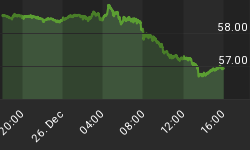 In early 2008 it was reported that at least some of the gold bars in the vaults at the National Bank of Ethiopia were fake. The discovery was made when bars shipped from Ethiopia to South Africa were returned after they were identified as being gilded steel.
In early 2008 it was reported that at least some of the gold bars in the vaults at the National Bank of Ethiopia were fake. The discovery was made when bars shipped from Ethiopia to South Africa were returned after they were identified as being gilded steel.
Gilded steel is a very unconvincing form of fake gold because the density of the iron alloy is significantly less. A steel bar identical in volume to the standard 400 troy ounce gold bars commonly used in bank-to-bank trades would weigh only 162.5 troy ounces (about sixty percent lighter). Anyone familiar with handling gold bars would easily identify them as fake.
Even lead, a common heavy metal, is a poor substitute as it is only 59% the density of gold. One of the things that historically made gold so attractive to be used as money was its unmistakable density.
Nowadays we know of several metals that have similar densities to gold, such as the heavier platinum-group metals. However, using these metals to produce fake gold is unprofitable due to their high cost.
There are two metals that are suitable, from both a density and economic perspective, for manufacturing fake gold - uranium and tungsten.
These metals aren't without their give-aways either. Different chemical and electro-magnetic properties exist. Uranium is of course radioactive. Tungsten is extremely brittle - the exact opposite of gold. Additionally, tungsten has the highest known melting point of any non-alloyed metal at 3422 degrees Celsius, making it difficult to work with. However, it appears that at least one high-temperature furnace is producing gilded tungsten products.
A Chinese company called Chinatungsten is advertising imitation gold merchandise on its website. The following quote is taken directly from their Tungsten Alloy for Gold Substitution page:
"a coin with a tungsten center and gold all around it could not be detected as counterfeit by density measurement alone ... We are well accustomed to exploit more innovative applications of tungsten products. Gold-plated tungsten is one of our main products."
This raises a few (somewhat rhetorical) questions. What kind of customer is this company looking to sell its imitation gold products to and for what purposes are they intended? Furthermore, what exactly are the "more innovative applications of tungsten products" that this company is hinting at?
















